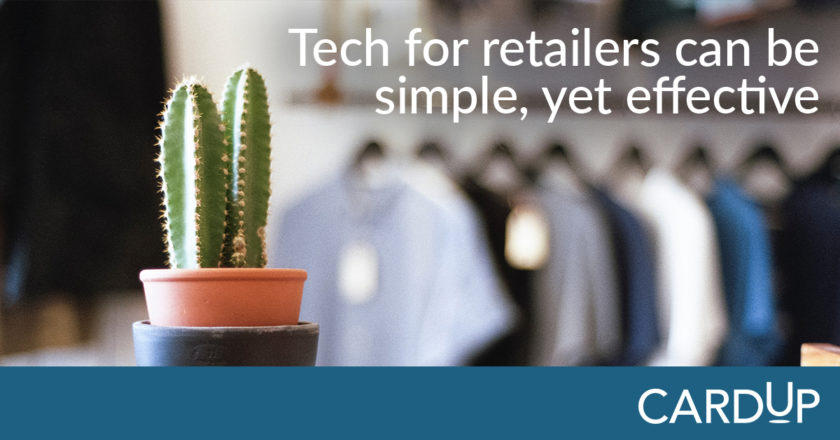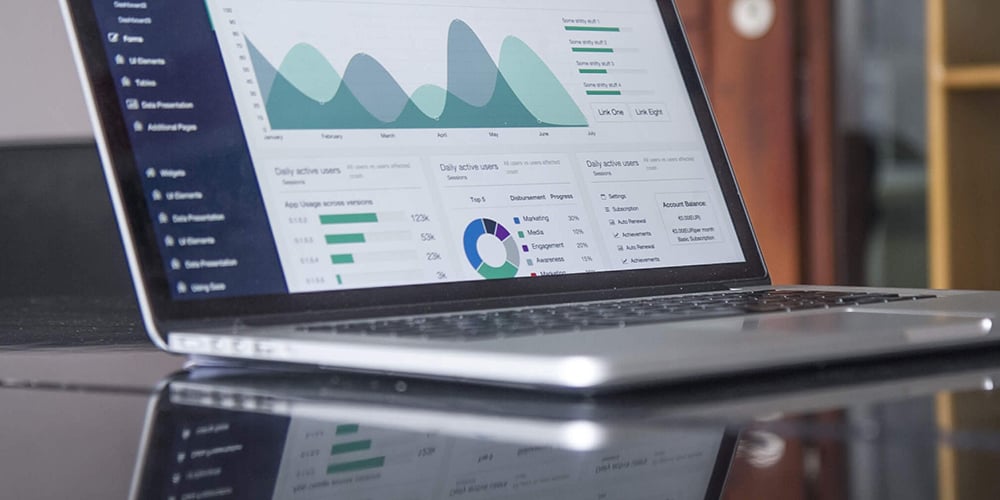Tech for retailers can be simple yet effective
CardUp admin
Aug 12, 2018 12:49:03 PM


There has been an explosion in innovative tech within the retail sector. From artificial intelligence (AI), virtual reality (VR), facial recognition, blockchain to customer service chatbots — all implemented by retailers who hope the next big tech trends can help attract and retain today’s famously fickle customers.
Whether it’s the C-suite at major international brands or owners of independent cottage-industries and start-ups, there’s mounting pressure to adapt to new technologies as well as apply a data-driven approach to solving real business challenges and in turn driving rapid business growth.
But with the pressure on, retailers don’t necessarily have to look to the most complicated tech in order to get a return on their investment. In fact, typically the simpler it is, the better. We’ve rounded up three of the top challenges that retailers face, and look at some simple tech solutions to help solve them.

Retail is complicated these days. Consumers expect their smartphones to be a one-stop shop, putting enormous pressure on retailers to deliver a seamless omnichannel experience. The technical challenge is immense and it’s often still a work-in-progress for most retailers.
With all of that complexity, it’s easy for retailers to lose sight of what’s actually important — creating the best customer experience both online and offline, throughout the buying journey.
Until recently, retailers have relied on basic approaches, such as using unique vouchers and coupons or even exit surveys to track the steps shoppers take in the ever-increasing number of omnichannel sales. But this is starting to change as data giants such as Facebook and Google have created offline conversion tracking tools that allow bricks-and-mortar stores to bridge the gap easily.
The power of this is incredible, especially when you consider that 90% of retail sales still happen in-store, while these customers begin their research on products and business locations through their mobile phones. Facebook’s Store Visits answers this challenge by helping businesses to achieve their end-objective of driving customers into a bricks-and-mortar store. Through creating personalised ads with location-based relevance, the tech reaches out specifically to nearby shoppers, attracting them into the store.
Coupled with powerful reporting tools, retailers can now see the direct impact these online campaigns have on their offline foot traffic. A simple idea for a simple problem.

Chief marketing officers (CMOs) often say that not having enough data isn’t the problem — it’s knowing what to do with it.
For retailers in particular, tracking customer patterns using Wi-Fi hotspots, sensors in-store and QR codes, for example, can give much better insights into customer sentiment and behaviour. The collection and analysis of these rich insights can help greatly in driving business decisions.
One company that does this well is Capillary Technologies. They are a cloud-based customer engagement platform that helps brands utilise the data collected from individual digital touchpoints with their consumers, which then provides personalised experiences for each and every one of them. This approach gives a true 360-degree view of each customer and streamlines the entire customer journey into one consistent experience.
But data isn’t just useful for boosting customer experience. It is also critical to leverage these predictive customer insights for new opportunities and growth — if not now, then soon. The most innovative retailers know that in addition to identifying technical gaps, it is also essential to align your analytics strategy with your business goals, and to have sufficient operational and governance capabilities in place. By doing so, retailers will be able to build scalable analytic programmes that can be adjusted as they grow, driving better results and profitability.

Cashflow optimisation is key to all retailers, allowing them to prioritise their working capital to enable growth. Getting there, however, is easier said than done. In fact, a recent study by JP Morgan cited the average small and medium-sized enterprises (SMEs) hold a cash buffer enough to support only 27 days of their typical outflows.
A huge portion of this problem lies in the high upfront costs to stock up on inventory, logistics and the need to order supplies in bulk — battles fought daily to keep working capital afloat. Couple this with the high cost of recurring monthly expenses such as rent and payroll, and it’s clear why the recent SME Financing survey by SPRING Singapore (now known as Enterprise Singapore) suggests cashflow management is the number one pain for small businesses in Singapore this year.
Fortunately, the rise in fintech means more convenient and flexible solutions that can immediately impact these cashflow needs of retailers.
CardUp, for instance, is an online payments platform for cash management that enables retailers to use corporate or personal credit cards to pay for big expenses like bulk supplier purchases or payroll, even if the recipient doesn’t accept card payments. This opens up the ability for retailers to use the pre-approved credit limit on their cards, which usually sits dormant save for the occasional team outing or business trip. In this way, retailers can use short-term credit to finance these larger items, so working capital remains to keep business going.
One retailer taking advantage of this solution is Paula's Choice, a skincare brand distributor in Singapore and Malaysia with two retail stores in Singapore. Team leader at Paula’s Choice, Jeremy Tan, uses his credit card via CardUp to help optimise cash flow for the business:
“There are many ways personal credit limits can be utilised properly especially in a small team to keep operations going smoothly. CardUp’s web platform enables all this to be done in one place and is also very intuitive. The SMS function to remind me about payments is really very helpful! Coupled with either a rebates card or a card with split payments, CardUp delivers important value to any small business owner”.
--
In short, technology for retailers doesn’t have to be complicated to be effective. It is, after all, there to solve the problems we face in business now, not in the future — the VR goggles can wait a little longer!
--
A version of this post first appeared on Retail Asia.